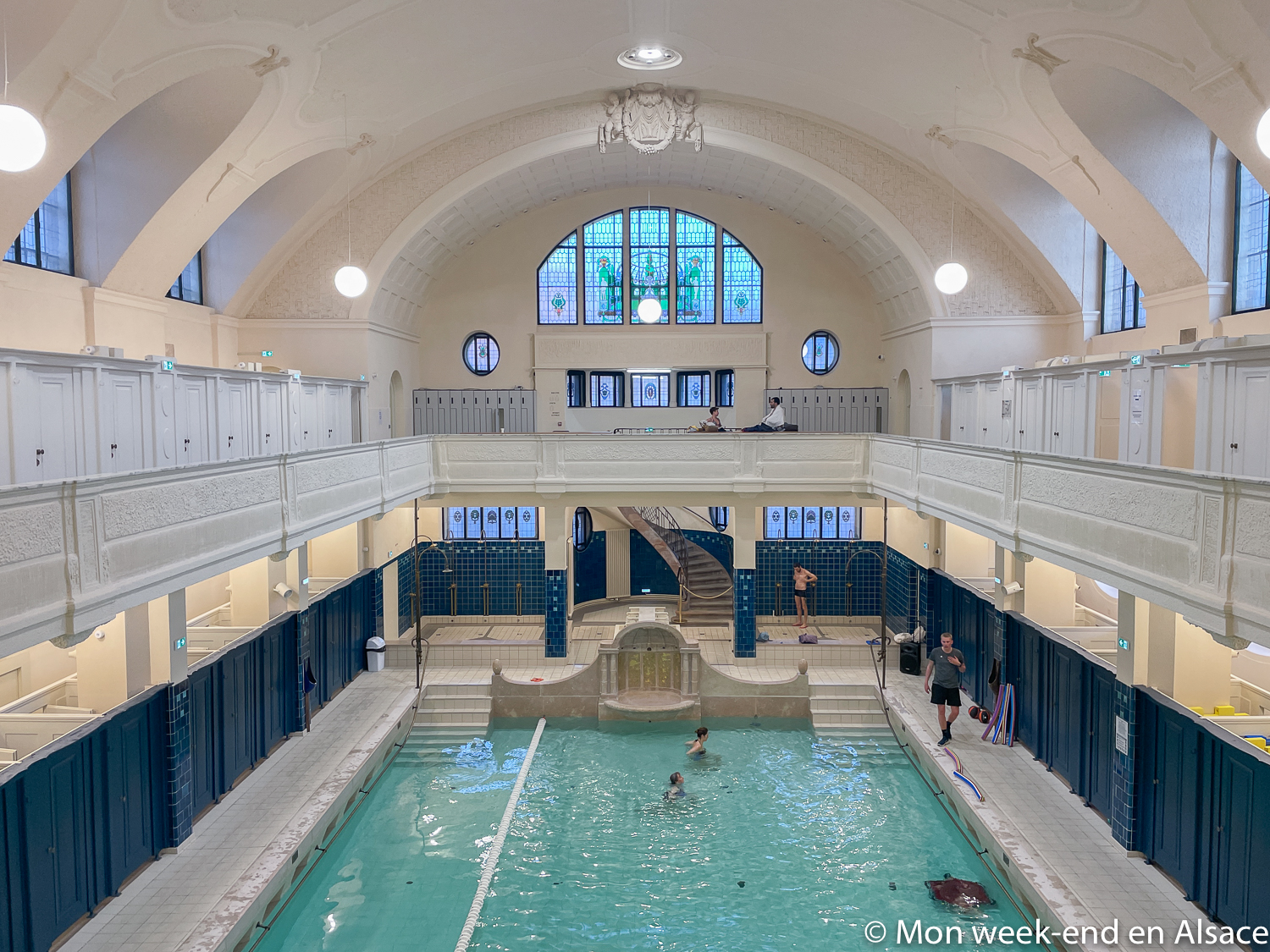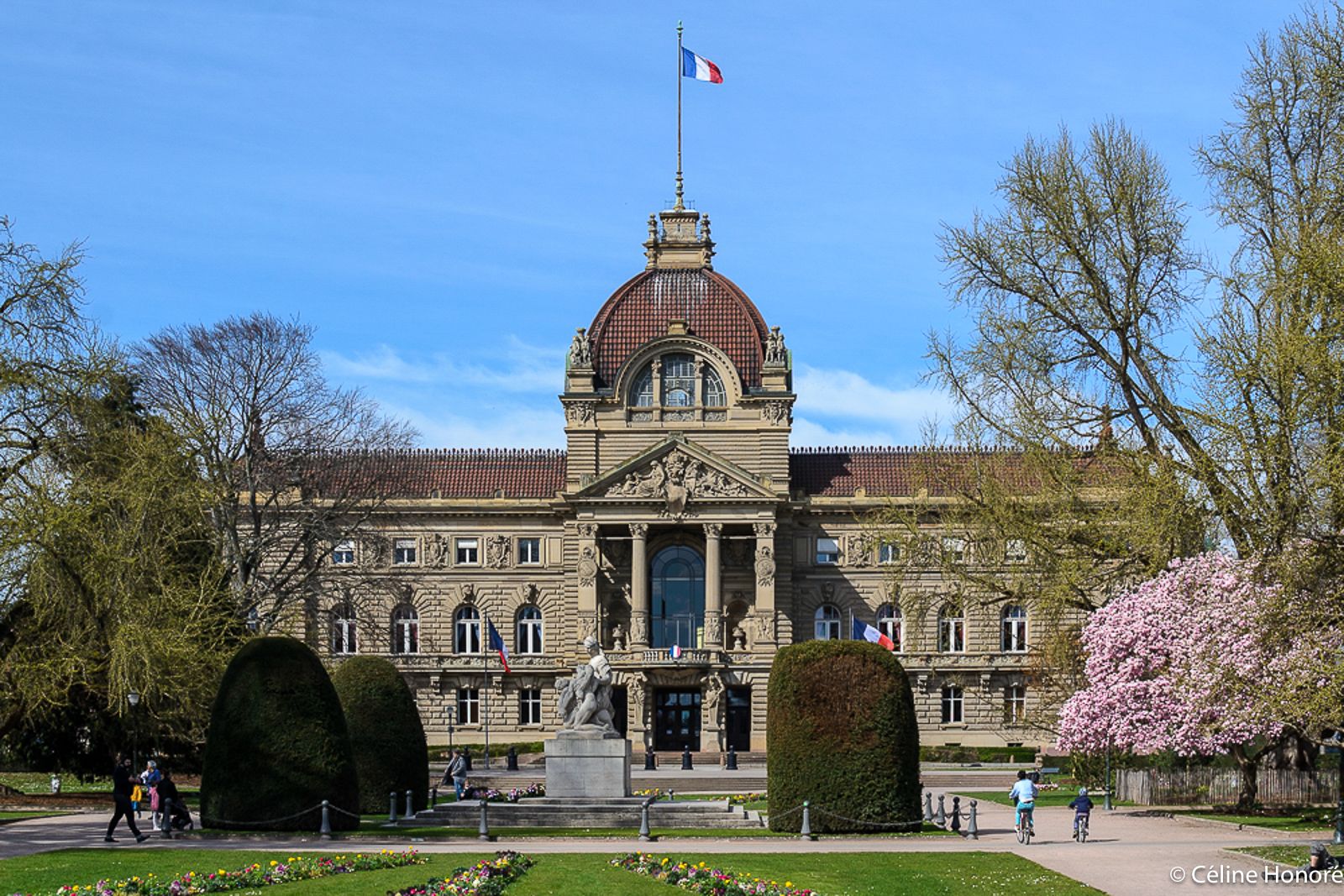Have you toured the Grande Île and Petite France areas south-west of Strasbourg? So let's head for the north-east of the city: I'll take you on a tour of the Neustadt district, also known as the German Quarter. Less popular than the Old Town, with its imposing monuments and wide avenues, it nevertheless represents an important episode in the city's 19th-century history.
What is the Neustadt?
Neustadt, German for “new city”, refers to theurban expansion of Strasbourg after Alsace-Moselle became part of the German Empire in 1871. Strasbourg was chosen as the capital of the new Reichsland and had to live up to its new role.
Strasbourg’s Neustadt was Emperor Wilhelm I’s showcase of power. The construction policy transformed Strasbourg, which had previously been limited to its historic center and its false rampart, the Ill River. Architect Jean Conrath wins the competition for the urban extension. Whether for housing or the headquarters of the new administration, prestigious buildings will rise from the ground, and Strasbourg’s population will double thanks to this new city.
Located in the north of the Grande Île, the German imperial quarter has joined Unesco World Heritage in 2017. With its Art Nouveau, neo-Gothic and neo-Renaissance buildings and landmarks, the Neustadt is a veritable inventory of the 1871 – 1918 era and the city’s Germanic heritage.
My guide to Strasbourg

Plan an unforgettable stay in Strasbourg and the surrounding area without wasting any time, thanks to my guide ! You’ll find the best places to visit, activities not to be missed and the best addresses! The guide is only avaliable in FRENCH for the moment.
Discover Strasbourg’s Neustadt district – My map
To appreciate the Neustadt, you have to take the time to observe, to look up. On doors, porches, pediments, facades, pretty details are everywhere. Mouldings, reliefs, volutes, ornamental stained glass. Royal busts or bestiaries, columns surmounted by capitals, statues planted atop Wilhelmian buildings.
With all these opulent buildings, it’s almost like being on a Parisian boulevard, and the Haussmann influence is tangible. Apart from the Place de la République, it’s primarily a residential area. Significantly less crowded than the historic center, strolling through the Neustadt also allows you to take a breather. Please note that some administrative buildings are not open to the public, but do open their doors during the European Heritage Days.


I’ve put together several itineraries to help you discover it:
- a heritage trail with important buildings
- architectural nuggets not to be missed with an Art Nouveau tour
- and finally, a gourmet stroll.
The Neustadt’s landmark buildings
Place de la République
To discover the Neustadt, the easiest place to start is Republic Square (Kaiserplatz), with its central garden and its many important official buildings. Whether in spring, when the magnolias are in bloom, or when the gingko bilobas put on their autumn finery, the light is always incredible.

A walk around the square reveals the imposing Palais du Rhin, formerly the Palais Impérial (now the headquarters of the DRAC), the former Ministries, two similar buildings now occupied by the Prefecture and the Direction Régionale des Finances Publiques, the Bibliothèque Nationale Universitaire (BNU) and finally the former Palais du Landtag (the Legislative Assembly), to which an extension has been added at the rear to house the Théâtre National de Strasbourg (TNS).
I recommend a visit to the Bibliothèque Nationale et Universitaire (BNU) to admire the monumental staircase and glass roof. Although access to the upper floors is reserved for students, it’s well worth a look!


The imperial axis
Theimperial axis corresponds to theAvenue de la Liberté (formerly Kaiserstrasse), which links the Rhine Palace on the Place de la République to the university district and the Palais Universitaire at the opposite end. As you stroll along the Avenue, you’ll come across other important buildings: the Villa Greiner, now home to the Tomi Ungerer Museum, and theHôtel des Postes, now a chic brasserie and upmarket real estate complex. A little further on, the Germania, better known today as the Gallia, university residence and restaurant. And from the Pont Royal you can see the two spires ofSt Paul’s Church. And don’t forget to take a look at the superb (and amazing) Lycée des Pontonniers nearby!

The university district
The Palais Universitaire, at the other end of the imperial axis, is a real favorite. This building is truly sumptuous. Surrounded by galleries on two levels, the covered courtyard is bathed in light that penetrates through the immense glass roof. Corinthian columns, crimson curtains and walls, mosaics on the floor – the atmosphere is studious, respectful yet warm.


What a theatrical setting (and what luck for Strasbourg’s students), it almost makes you want to go back to school. It’s primarily a study building (open Monday to Friday, 8:30am to 11:45am and 1:00pm to 4:30pm during university periods), but it’s possible to sneak in and take a tour of the gallery (via the magnificent marble staircase).
What’s so special about this place? In the basement, the Adolf Michaelis Museum houses a collection of casts of ancient statues. Visits are free, and the museum is open Mondays, Wednesdays and Fridays from 2pm to 6pm. And don’t forget to say hello to Goethe, who’s keeping an eye on things outside!


Strasbourg Municipal Baths
Another favorite is Strasbourg’s Bains Municipaux. With its period wooden cabins, stained glass windows, blue ceramics and marble, this former municipal swimming pool (listed as a historic monument), built in 1908, is a magnificent little gem in the heart of the Neustadt. Freshly renovated, it is now a place dedicated to health, sport and well-being. The historic pools – which can be admired from the cabins upstairs – and Roman baths have been complemented by a sauna, Jacuzzi and spa area with outdoor pool and fitness area.
It’s common sense, but you can’t take an Art Nouveau bath the same way you visit a museum. You’ll need to come specifically to enjoy the aquatic area. But as long as we’re wading, let’s wade in style, an excellent excuse for relaxation.


Strasbourg University Botanical Garden
I have a great passion for botanical gardens and tropical greenhouses in particular. The heat, the vegetation, I could hang around for hours in these little urban jungles. The Botanical Garden is located behind the university complex. Created in 1619, the botanical garden boasts almost 6,000 plant species – including 450 exotic species in the greenhouse – spread over 3.5 hectares. It is particularly pleasant in summer when the vegetation is lush. A little bubble of calm and freshness, perfect for strolling, taking a break or reading by the central pond… One of my favorite parks in Strasbourg!

Art Nouveau tour
Towards the end of the 19th century, a new artistic movement took hold in the fine arts and architecture in particular:Art Nouveau (Jugendstil in German).
How do you recognize this trend?
This can be seen in the materials used: reinforced concrete, wrought iron, stained glass and ceramics decorating the building facades. But also the curves, arabesques and plant motifs that infiltrate the building.


What are the most beautiful Art Nouveau apartment buildings in Strasbourg?
Strasbourg boasts some fine examples of this type, on rue Sellenick for example, or onAllée de la Robertsau, a prestigious thoroughfare in the Neustadt. Unusual, atypical but always very aesthetic, here are a few that really stand out for me:
- As you move along rue du Général Rapp, a colorful facade appears at number 10, depicting papyrus, lotus, birds and pharaohs. With its door framed by two columns that rise to the top, the Egyptian House is astonishing. This 1905 building was designed by painter Adolf Zilly and architect Franz Scheyder.
- Colorful tiles depicting fleur-de-lis, inlaid climbing roses and ginkgo leaves. Along with the Egyptian building, the one at 56 allée de la Roberstau is surely one of the prettiest and most ornate.
- This original house has the air of a Casa Barcelona. At 20 rue Sleidan, Villa Brion is recognizable by its light-colored facade, butterfly gate and blue metal railings.
- Finally, even though it’s not in the heart of the Neustadt but in the Krutenau district, don’t miss the magnificent Art Nouveau façade of the Hear (Rhine University of the Arts), made of brick and ceramics.

Gourmet Neustadt
After strolling the streets and avenues of the Neustadt, there’s nothing better than a culinary break. The area boasts some fine addresses:
- It’s small, but has a tea room area, and the GC Patisserie has the advantage of being off-center and therefore less crowded. The pastries are very elegant and inevitably delicious, tested and approved by the sweet tooth that I am.
- Before dessert, you can start at Niko Niko, a fine Japanese restaurant just across the road on Avenue des Vosges.
- Nearby, Les Innocents. You have to get up early to get a table, as the establishment is often fully booked. The restaurant serves highly creative bistro cuisine, so if you’ve earned that precious sesame, go there with your eyes closed.
- A pretty seasonal menu, from starter to dessert, everything is delicious and well prepared at Cafoutche. The bar-restaurant is located in the TNS building. In summer, you can enjoy lunch or an aperitif on the large terrace. Go there after your visit to the Tomi Ungerer Museum.
- On the university side, you’ll find a Michelin-starred restaurant, Les Funambules.
- And next to the Bains Municipaux, Chez mon Ex, a restaurant for meat, burger and plank lovers.



